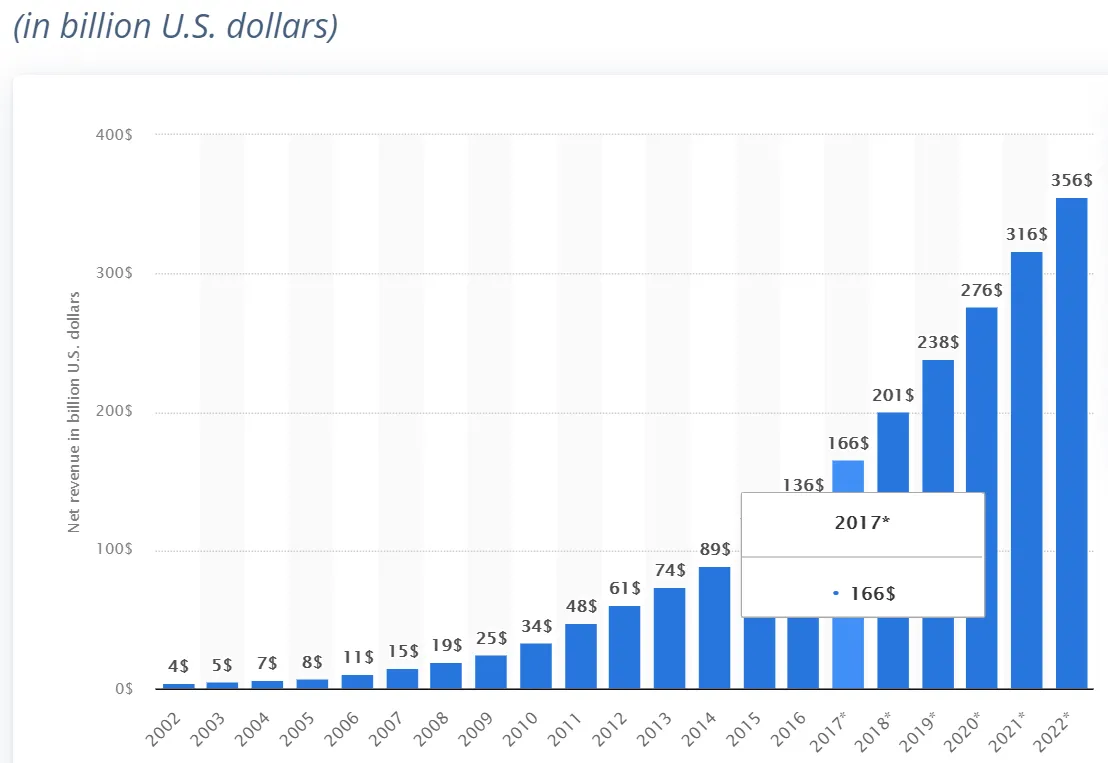
50 Reasons for the failure of an Ecommerce website
1. Using Low-Quality Images
Customers rely on the images available on the site to get a feel for your product. Instead of using generic, low-quality photos, display high-resolution pictures. It gives a great view of the product from different angles.
The problem with using low-quality images is that brand perception is immediately affected.
Users feel the website doesn’t care to offer them quality visuals of the product they wish to purchase. Below is a blurry image and doesn’t show precise quality after zooming in.
 And this is a huge problem for eCommerce brands because they rely on them for better sales.
And this is a huge problem for eCommerce brands because they rely on them for better sales.
Also, pixelated images do not suit any niche.
- They point out bad web design principles.
- They can turn off potential clients from buying.
Optimized images can be low footprint and look good as well.
As a brand, you should opt for this rather than using low-quality images. Make sure that you run the best optimization techniques for your product images. After all, a picture is worth a thousand words.
2. Setting Bad Pricing for Products
One of the main reasons people shop online is that they can buy at a lesser rate than retail outlets. So, when you decide your price point, take into account the shipping and overhead costs. Also, check what your competitors offer.
Low pricing may attract customers, but it may not help sustain your business. Because it is a competitive market, pricing plays a pivotal role in your brand positioning. It also decides profitability, which means that you need to get this right.
You cannot fix the pricing without adequate market analysis. First, you need to conduct comprehensive A/B testing. Then, you need to be prepared to revise prices on the fly in response to the market.
If you consistently get a healthy stream of sales, you can keep it the same or raise it slightly after a few months. If the sales don’t happen as expected, it’s better to reiterate.
Big brands like Target, Amazon set their prices right. Take a look at the pricing set by Target for an led tv.
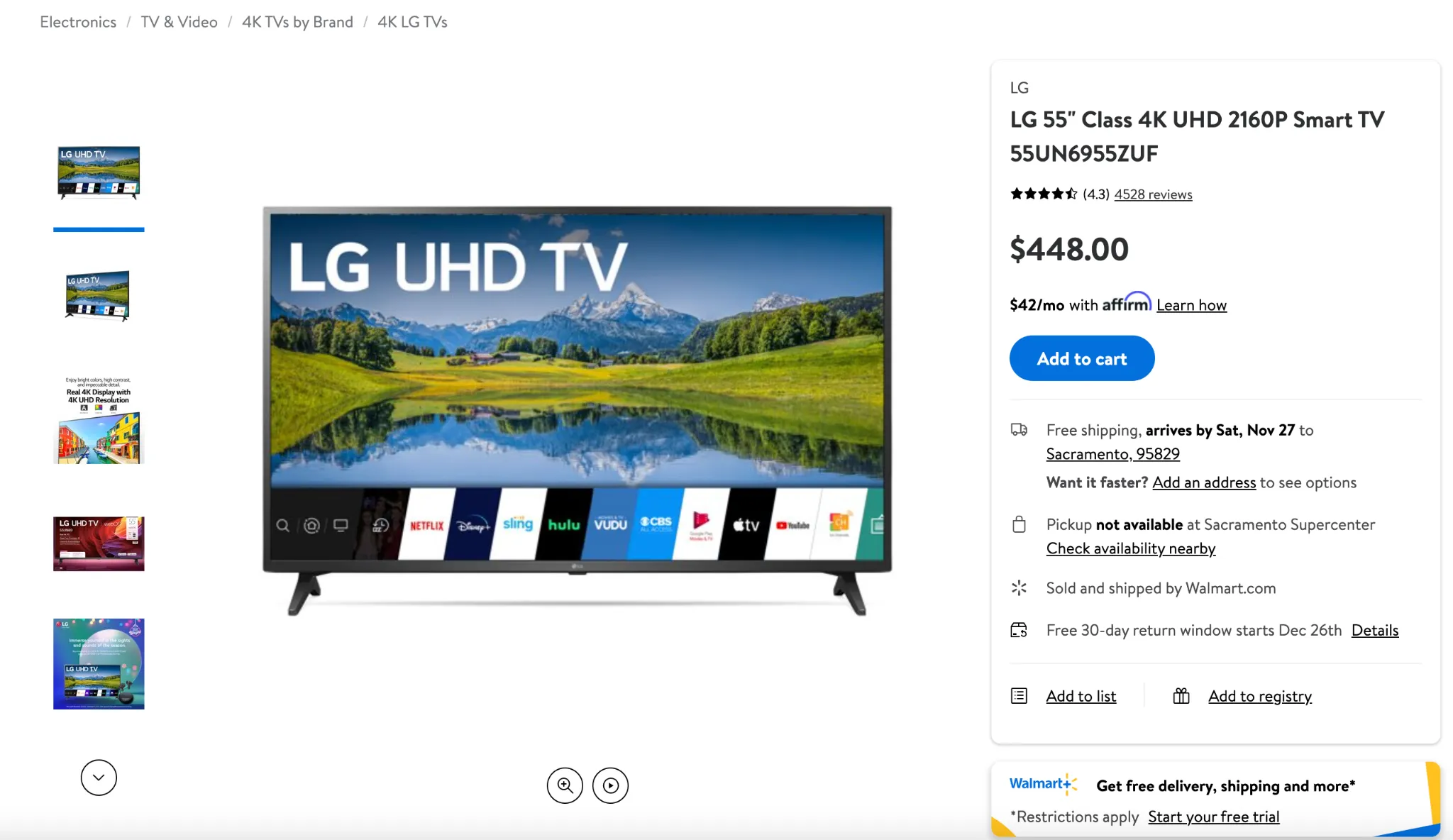 The key is to keep in mind your minimum profitability. To lower more than this would be unsustainable.
The key is to keep in mind your minimum profitability. To lower more than this would be unsustainable.
3. Lack of Clear Marketing Strategy
Who’s your target audience? Plan your marketing strategy accordingly. To get excellent reach, you must invest in a plan that includes traditional and social media marketing.
 You need to make sure that your research is on point when it comes to your marketing plan. A marketing plan for eCommerce needs to be extremely detailed. It needs to account for audience behavior, competitors, products, and more. And you also need to take into account the saturation in the market.
You need to make sure that your research is on point when it comes to your marketing plan. A marketing plan for eCommerce needs to be extremely detailed. It needs to account for audience behavior, competitors, products, and more. And you also need to take into account the saturation in the market.
If you sell a common product in the market, people won’t buy it.
So, you should employ the best and proven marketing strategies to succeed in your ecommerce business.
E.g., Take a look at the Facebook remarketing ads run by Sony electronics.
 You should also include a pricing strategy as part of your marketing plan. Research thoroughly on the market and use paid media and social ads if needed, because out of sight, out of mind!
You should also include a pricing strategy as part of your marketing plan. Research thoroughly on the market and use paid media and social ads if needed, because out of sight, out of mind!
4. Awful Design With Poor Navigation
Remember, the packaging is as important as the product. So, it’s not going to help if you have the best of products and services to offer at great rates, but your website looks cluttered and shady.
| S.No | Elements | Attractive Design | Awful Design |
|---|---|---|---|
| 1 | SEO | Rank Higher in Search Engines | Search Engines will Demote the site |
| 2 | Trust | Increases Credibility | Lack of trust |
| 3 | Branding | Boosts Branding | Drives the visitors away |
| 4 | Showcasing Products | Elegant & Effective | Boring |
| 5 | Conversion Rates | Higher | Significantly Lower |
| 6 | Return Of Customers | Higher Chance | Less/No Repeated Customers |
| 7 | Revenue | More ROI | Less ROI |
| 8 | Visibility | Increased Visibility | Low Visibility |
Neat navigation, clear drop boxes, and fonts that don’t hurt your eyes are vital. Today’s customer has a lot of demands when it comes to these elements. And the design is a huge part of the experience for them.
Here’s an ecommerce design, which is not only complicated but doesn’t provide a better user experience.
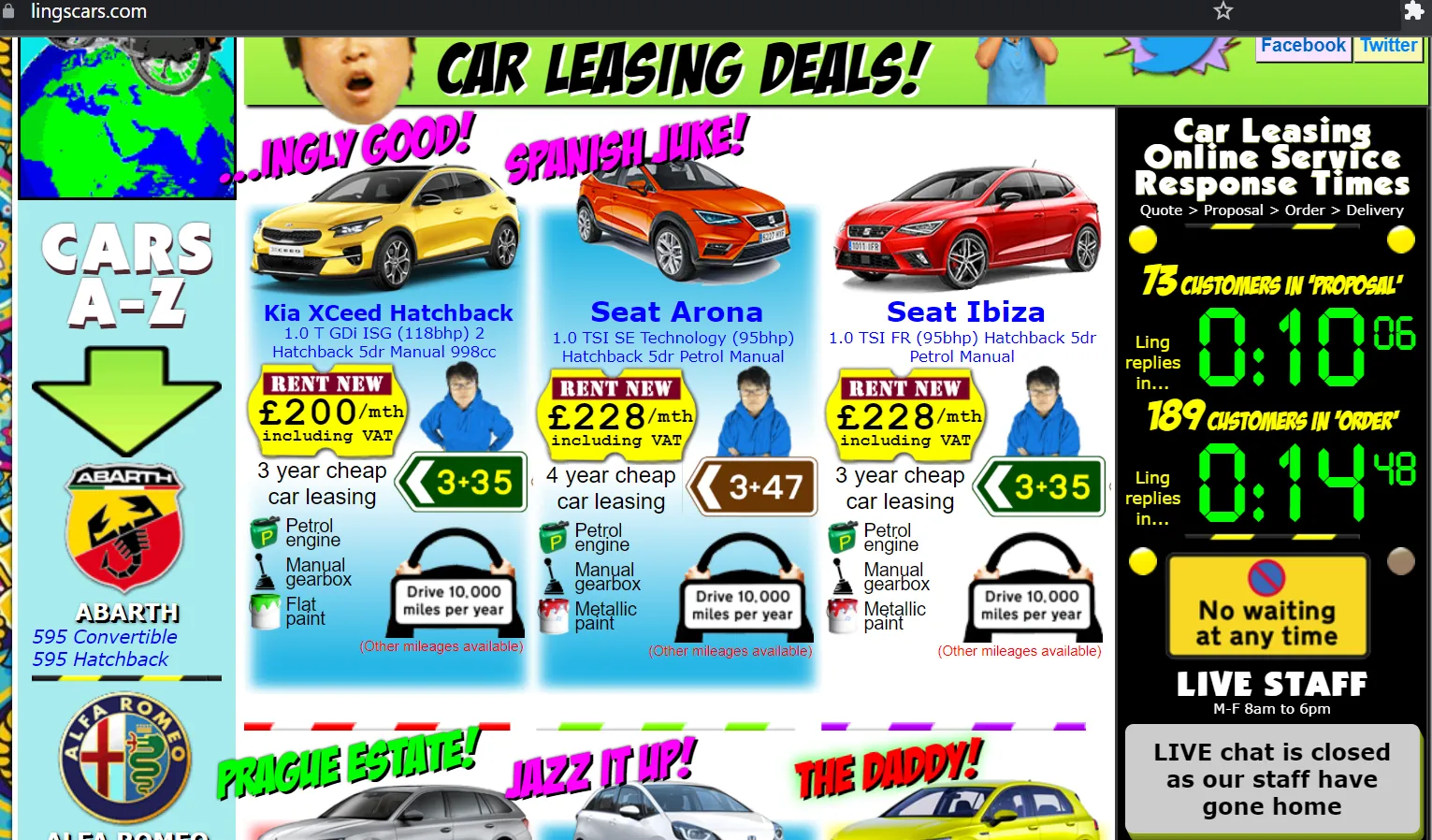 If a website looks poorly designed with subpar elements, they won’t buy from it. Compare top eCommerce websites with tier two brands. You will notice that design elements are superior to the low performing websites.
If a website looks poorly designed with subpar elements, they won’t buy from it. Compare top eCommerce websites with tier two brands. You will notice that design elements are superior to the low performing websites.
It means design plays a part in getting customers interested. It is important to stick to the highest design principles on an eCommerce website. These are important to attract customers.
Relevant : Importance of UX for an eCommerce site & How it Impacts your SEO?
5. No Clear Contact Details
You might be doing business online, but your company officially exists on paper, even if you run it from the backyard of your house. And this is important even when it comes to SEO. You need to update your Google My Business page with the right details.
Here’s a site ranking in GMB, which unfortunately have only a phone number instead of clear contact details.
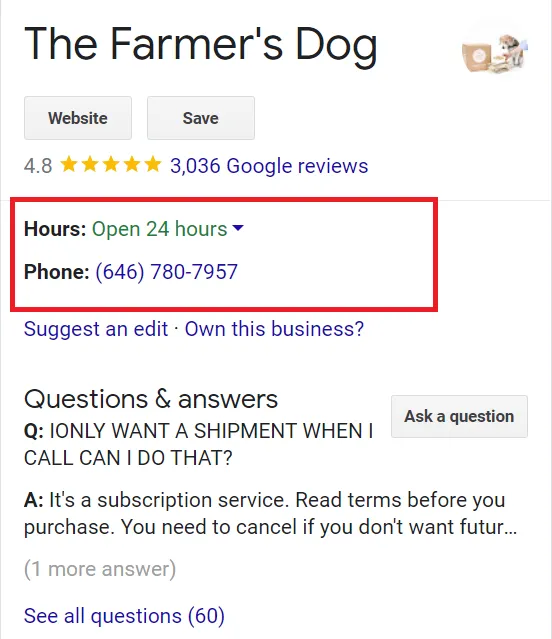 GMB is important when it comes to website ranking. Also, there are many Google services that lookup your address to match it to your closest customers.
GMB is important when it comes to website ranking. Also, there are many Google services that lookup your address to match it to your closest customers.
Lack of proper contact details can hamper this and not give your accurate website local traffic. Also, there might be customers who would like to visit your store. So, mention the contract address and numbers on the website. It will improve your credibility.
6. No Return Details / Missing Return Policy
Online shopping doesn’t give customers the ‘touch and feel’ experience that retail shopping does. So, they might want to return or exchange a product if they are not satisfied. And this is something that all eCommerce brands need to handle well.
There might be losses incurred because of the shipping charges. But you cannot blame your customers for this. It just means that the product wasn’t up to standard.
You can take these returns as feedback to further improve the product. Or, if it happens a lot of times, maybe the product isn’t right for the current market. At your end, you need to get a few things done for your customers.
Make sure you mention the ‘return policy’ explicitly.
Businesses like Amazon, Walmart, etc., are famous because of their customer experience. For example, here’s a site that neither mentions return policy nor the process to exchange an item. It creates a negative impression among the audience.
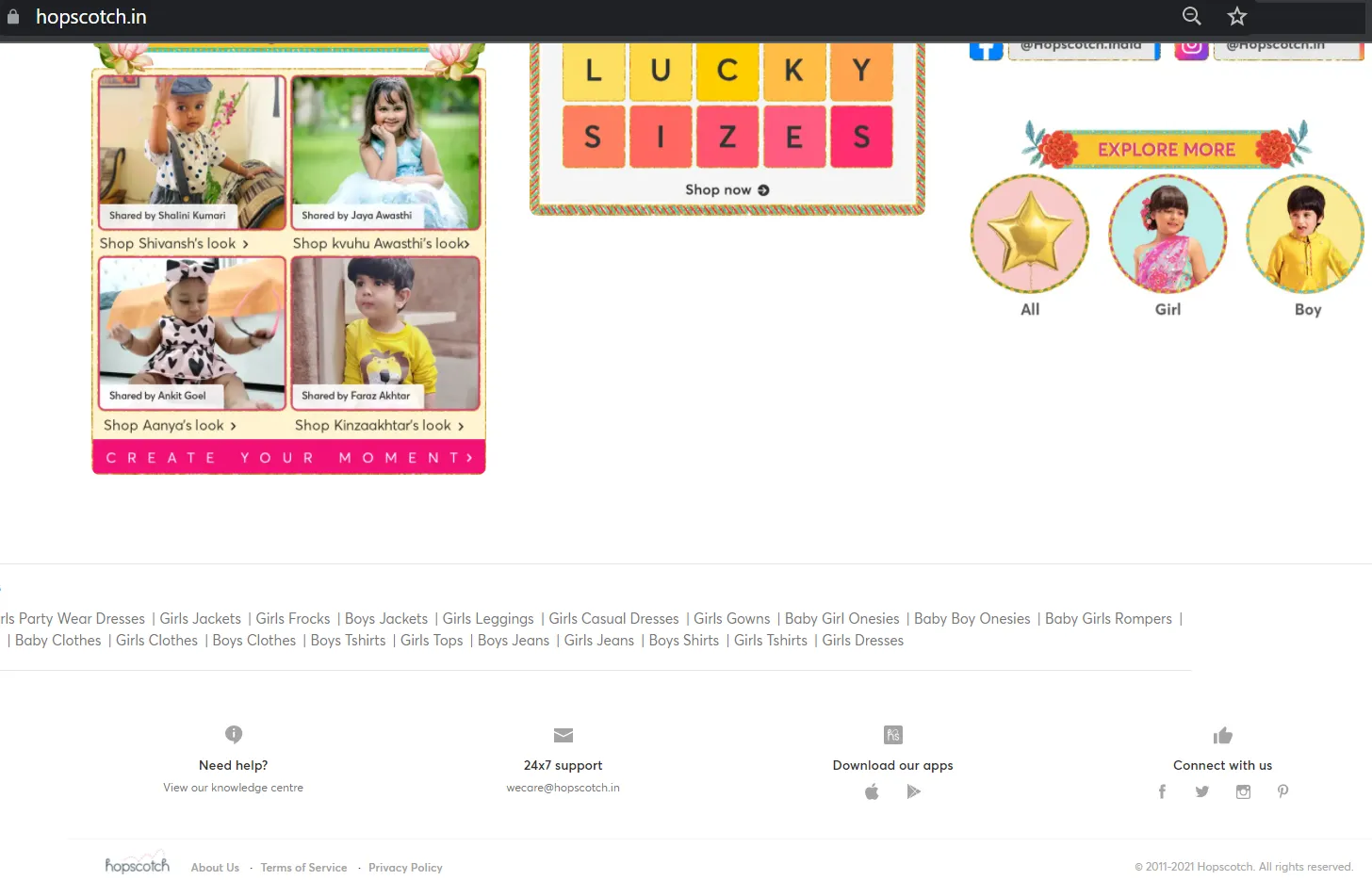 Set a strict deadline for the return and exchange of goods and the conditions you will accept. Make sure the policy is easily accessible.
Set a strict deadline for the return and exchange of goods and the conditions you will accept. Make sure the policy is easily accessible.
7. Lousy Customer Support with High Response Time
Add Customer care details like email address, 24X7 helpline, online chat, or a telephone number. They are as important as having great products to sell.
Nothing can be frustrating for a customer if he’s unable to reach the eCommerce store when he needs details or has a grouse. There are instances of customer support making or breaking brands.
 Amazon has an expansive customer support network. They are known to be responsive to their customers. Their turnaround times are also impressive. It is because they have a customer-first policy when it comes to supporting.
Amazon has an expansive customer support network. They are known to be responsive to their customers. Their turnaround times are also impressive. It is because they have a customer-first policy when it comes to supporting.
They are quick in their response through any communications mode, live chat, telephone, email, etc.
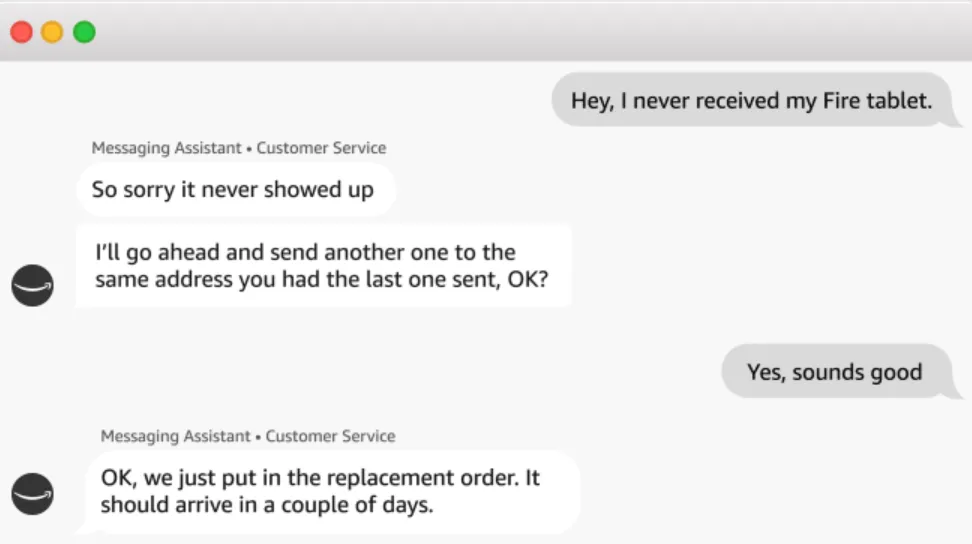 Their focus is on making sure that customers get what they want as quickly as possible. It means there is less waiting around holding on to a telephone.
Their focus is on making sure that customers get what they want as quickly as possible. It means there is less waiting around holding on to a telephone.
As a result, Amazon is considered one of the more customer-centric companies around today. And this is almost entirely because of the support staff.
8. Miserable Inventory Management
When it comes to business, maintaining an inventory is important. You can neither store too much nor store too little. So, how do you manage your inventory?
The answer to this is complicated. Because of the number of products an average eCommerce has to stock, inventory control is difficult. There are also several variables you should take into account.
A normal ecommerce store should have a minimum number of products that can attract customers. Having the least number of products with not-so-attractive images is a big failure, such as in the image below will make the users bounce off in a jiffy.
E.g., Take a look at this ecommerce website displaying the same images for three different products.
 What products people buy, how much, or how many times are a few events brands should track. These are factors that most companies need to consider when sorting out inventory.
What products people buy, how much, or how many times are a few events brands should track. These are factors that most companies need to consider when sorting out inventory.
You also need to have an idea of supply from your suppliers. Understand the limits of your vendors. Calculate the time needed, and take into account freight and storage costs before making a decision. You should not keep your customers waiting.
9. Entering Into a Massive Competition
Something that a lot of companies underestimate is the competition in their niche. New eCommerce companies are coming up every day. It is difficult to hold on to your slice of market share.
Based on a survey made on global ecommerce stores, more than 80% of the businesses say they have tough or very tough competition in the market, while only 1% of them assume to have no competition.
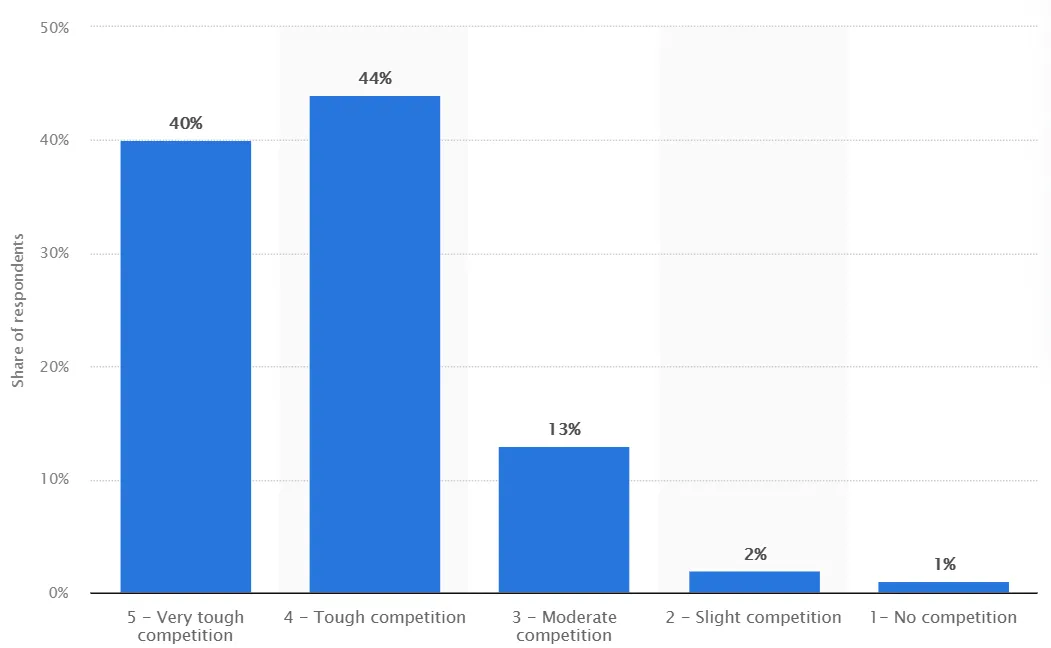 The only solution is to work on your list of competitors every day. Make sure that your website optimization is up to par. Keep track of your competition, but don’t shift the focus on them so much that you lose track of your own business.
The only solution is to work on your list of competitors every day. Make sure that your website optimization is up to par. Keep track of your competition, but don’t shift the focus on them so much that you lose track of your own business.
Try to gain an edge over others by providing quality services or offer incentives like 24-hour delivery or free shipping. You can also offer redeemable credit points and surprise gifts on certain orders. That is where you can get more people interested in offers or discounts.
10. Lack of Effective Email Marketing
Despite what they say about email marketing, it still offers stellar performance for eCommerce. A lot of success of current eCommerce brands is due to effective email marketing.
The below stats prove why you should not overlook email marketing.
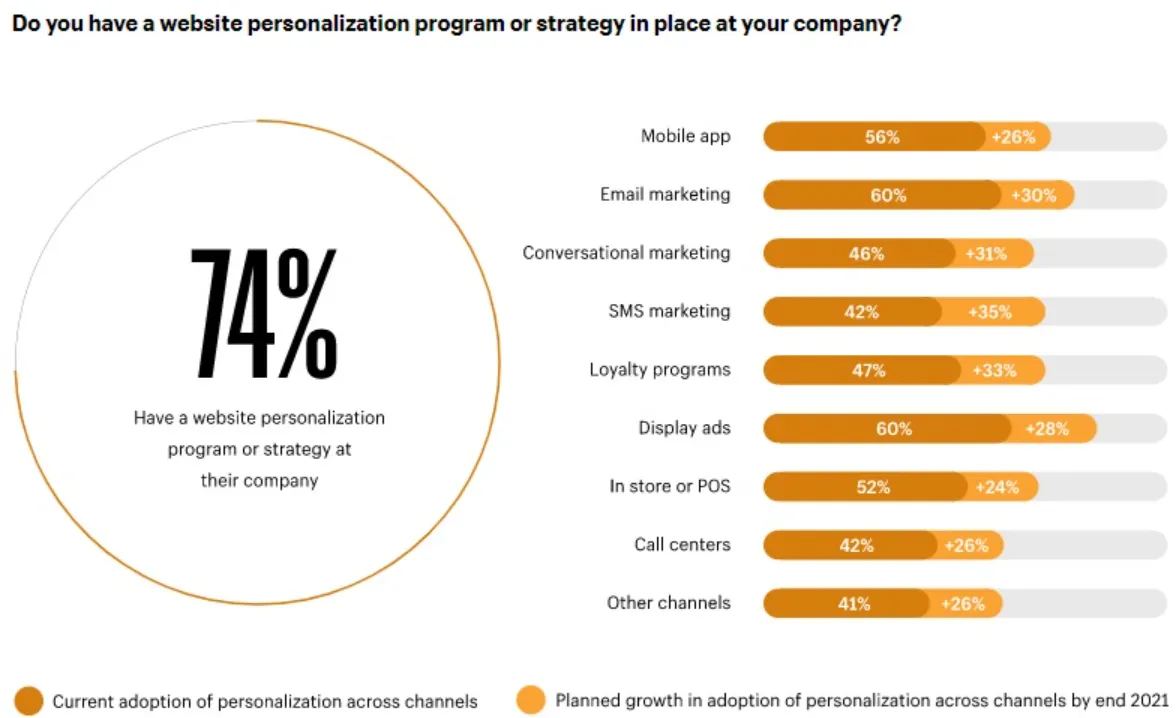 On average, a person checks his email at least thrice a day. So, an email to promote your business could increase the chance of them clicking on the link and visiting your site.
On average, a person checks his email at least thrice a day. So, an email to promote your business could increase the chance of them clicking on the link and visiting your site.
| S.No | Effective Email Marketing | Lack of Email Marketing |
|---|---|---|
| 1 | Cost-effective Marketing | High Spend on Marketing |
| 2 | Increased Conversion | Less Conversion |
| 3 | Enhance Your brand easily | Less Branding Opportunity |
| 4 | Easy to Promote New Products | No Option for Mass outreach |
| 5 | User Engagement is high | User Engagement is low |
| 6 | Increased Visibility | Low Visibility rate |
To drive more business, you can offer ‘first shipping free’ to those who register with your website. Another advantage of email marketing is that you can use it for retargeting customers.
For eCommerce, retargeting helps gain a lot of customers. You should also send a follow-up email to the customers. A good idea would be to send one after every purchase as it adds a personal touch.
11. No Proper Planning/Forecasting
- A good business plan should always include forecasting. How do you intend to build your eCommerce site?
- What are the kind of numbers you are expecting this year, the next year, and five years from now?
All successful businesses give utmost interest in forecasting revenue numbers. Here’s an example of Amazon’s business forecast.
![]()
- How much do you think your competitors will have grown?
- How long do you need to rank pages for this new product?
All these are questions that you need to have answers to. Accurate forecasting can help build a much better business model. It can help reduce fallouts and gaps in your strategy.
Have a clear idea of how your competitors are faring, and based on your growth, amend your ideas to build a strong business base. You should also take care not to spend too much time forecasting because the time spent on it and quickly gets out of hand.
12. Bad Website User Experience
How will customers shop if they can’t navigate through your website easily?
Providing the best user experience should be one of your prime concerns. Although MI is selling a commendable number of products, some users will get annoyed at the image below. The invite offers overlap, tracking the products along with the ‘cookies’ pop-up. It surely makes users bounce off.
 Your site has to be easy on the eyes. Using appropriate graphical elements and images can contribute to aesthetics.
Your site has to be easy on the eyes. Using appropriate graphical elements and images can contribute to aesthetics.
| S.No | Elements | Good UX | Bad UX |
|---|---|---|---|
| 1 | Target Audience | Easy to Reach | Hard to reach Targetted customers |
| 2 | Sales | Boosts Sales | Decreases sales |
| 3 | Visitors | Engages the Visitors | Visitor Bounce Rate will be High |
| 4 | Credibility | Increases Credibility | Lacks Trust |
| 5 | Navigation | Easy to Navigate | Tough to Navigate |
| 6 | Customer Retention | High Retention Rate | Low Retention Rate |
| 7 | Revenue | Increases ROI | Sales will shrink overtime |
Another important property is to open new tabs when clicking on products.
- It can give users the ability to browse easier.
- It is also in your interest to keep your navigation light and easy on the eye.
- It can give users the clarity to make quicker purchase decisions.
Make sure that you have enough website optimization to ensure the site doesn’t take long to load. Also, carry out regular audits of your eCommerce website.
You must avoid missing links, images, and information that aren’t readable. If you have any of these, then it will drive your customers away. By following these, you can deliver the best user experience to users.
13. Weak Investment With limited Growth Potential
The starting investment is vital in any business to keep it going. And this is a critical topic because you cannot put in more money than you’ve budgeted. So, invest wisely, taking into account all the business factors you’re able to.
 The initial investment is what keeps the website online. It also enables you to take care of stocking and procurement. It is crucial to keep the site running, from ordering the stock to spending on software and staff to keep the company working.
The initial investment is what keeps the website online. It also enables you to take care of stocking and procurement. It is crucial to keep the site running, from ordering the stock to spending on software and staff to keep the company working.
Know how to manage your money. Of course, there is a trick to maximizing your investments.
Starting small can give you the ability to stretch your budget later. Experts say that it’s always easier to under-invest first and correct your mistakes later. You’ll at least not incur losses that way.
14. Lack Of Product Reviews
The difference between customers today and before is that now, social proof is everything. The first thing a prospect does is check online for reviews.
Most customers read through the details of the product and check out all the images. But if there’s one thing that most certainly helps them make a decision, it’s user review.
 Encourage your buyers to leave a review, even if it’s one sentence, ask them to rate your site. When it comes to selling a product effectively, nothing works as well as a review.
Encourage your buyers to leave a review, even if it’s one sentence, ask them to rate your site. When it comes to selling a product effectively, nothing works as well as a review.
Most products in the market fail solely because of bad reviews. And the reason is that consumers today settle for nothing less than the best.
As an eCommerce owner, you need to make sure reviews are accessible. Having it right on top of the product page can be helpful for visitors.
15. Lack Of High-Converting Call-To-Action Buttons
Make it easier for your customers to add the products to the cart. Also, make it easy for them to choose the size/quantity, apply coupons, and check out.
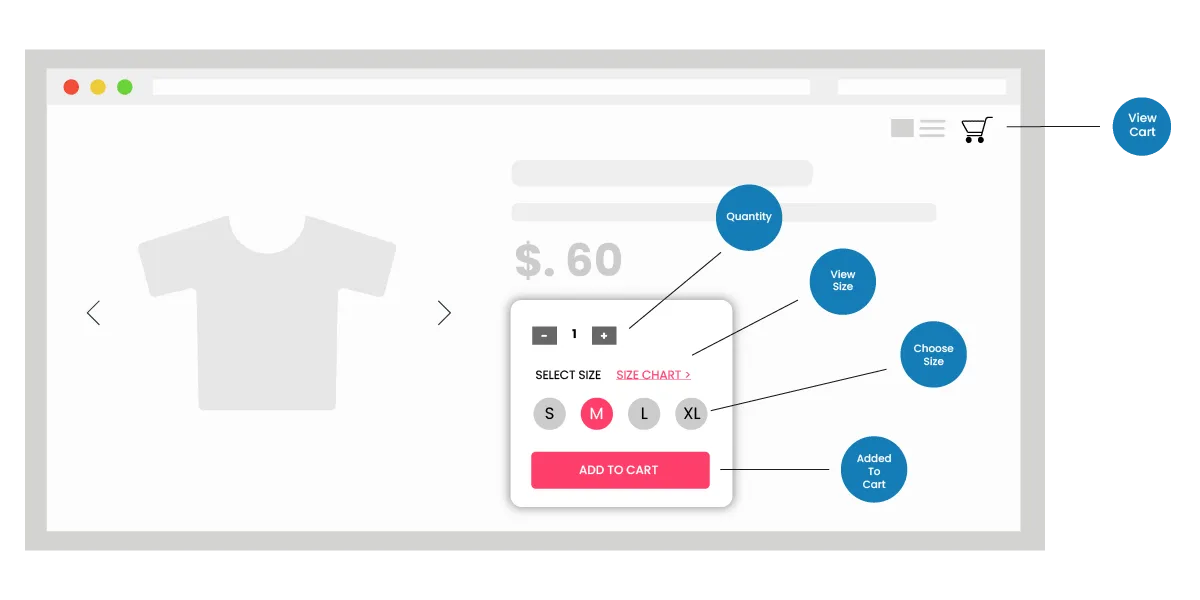 For that, you need to have call-to-action buttons that stand out. Ensure they don’t have to search through various links to figure out how to choose a size for a shirt they want to buy. If they do so, we don’t think you are making that sale.
For that, you need to have call-to-action buttons that stand out. Ensure they don’t have to search through various links to figure out how to choose a size for a shirt they want to buy. If they do so, we don’t think you are making that sale.
There have been several instances when just changing the CTA buttons have resulted in better sales. Find out what works for your niche and make use of it.
16. Having Complex Checkout Process
It’s always advisable to have an express checkout option. It’s a one-click process to go to the address and payment page after choosing the product.
Filling lines of details before buying a product can test their patience. Keeping the checkout process easy is the key to getting more sales from your customers.
Amazon has a one-button checkout option on its app and website. It gives you the flexibility of shortening ordering time. It is convenient and has drawn a lot of positive reviews.
17. Less Customer Engagement
As an eCommerce company, one of your objectives is to engage with your customers. You don’t need to keep spamming them thought. It’s not advisable to bombard people with mailers and popups every day. Also, it’s not a great idea not to engage with your customers.
Promote your services on social media. Have a team in place for responding to social media chats.
Make sure you respond to customer queries, small or big. It makes them happy and assures them that you care about your customers.
 Loop them in on exciting contests and partner with brands for better visibility.
Loop them in on exciting contests and partner with brands for better visibility.
A subtle ‘hello, happy to help’ chat when somebody visits your site can help you build a loyal customer base.
18. Targeting The Wrong Audience
Who are your intended customers? Do they have the wherewithal to buy what you have on offer?
Get answers to these questions right before you start marketing. That is why any eCommerce brand needs to conduct their research in detail. And this is especially true when choosing the right demographics.
Suppose your store sells world-class beauty products, then targeting the male and aged women (50 years or so) may not fetch you more sales. In the below image, the people between the ages of 25-34 are interacting much with the site. So, the store should focus on targeting only the female audience.
 Thoroughly research your target audience. It will give you a clear idea of how you can sell your products.
Thoroughly research your target audience. It will give you a clear idea of how you can sell your products.
19. Not Optimizing For Smartphones
As technology advances, people are slowly moving away from computers. These are the times of smartphones and apps. If your website doesn’t look great and work fast on mobile devices, you lose out on a large share of customers.
More than 51% of the traffic to a website comes from mobile. And these numbers are only going to increase.
People find it easier to shop when they are on the go. The image below, which sells comic books online, has a terrible mobile view that annoys the users.
 Hence, it’s important to make your site mobile-friendly. You should ensure that your website is responsive to different screen sizes.
Hence, it’s important to make your site mobile-friendly. You should ensure that your website is responsive to different screen sizes.
20. Overlooking Search Engine Optimization
Perhaps one of the biggest mistakes when it comes to eCommerce today is skipping on SEO. SEO is one of the highest drivers of leads and revenue today. And this is specifically relevant for eCommerce.
An SEO-friendly site is easily recognizable on search engines. It is a big plus for any eCommerce website.
In the below image, the website ranks 1st out of more than 6 billion competing pages. Surely, the highest number of users will be entering these websites than the sites ranking below it.
 So, identify important keywords – like the product category, sizes, and brands. Then use those keywords in descriptions and tags. Test your keywords before finally using them. Remember, eCommerce SEO is the key to your eCommerce success.
So, identify important keywords – like the product category, sizes, and brands. Then use those keywords in descriptions and tags. Test your keywords before finally using them. Remember, eCommerce SEO is the key to your eCommerce success.
21. Inadequate Product Search Results
Another area where eCommerce websites lag is accurate searches. Your website search should be robust. It needs to be powerful enough to recognize audience search patterns. And it needs to deliver results quickly as well.
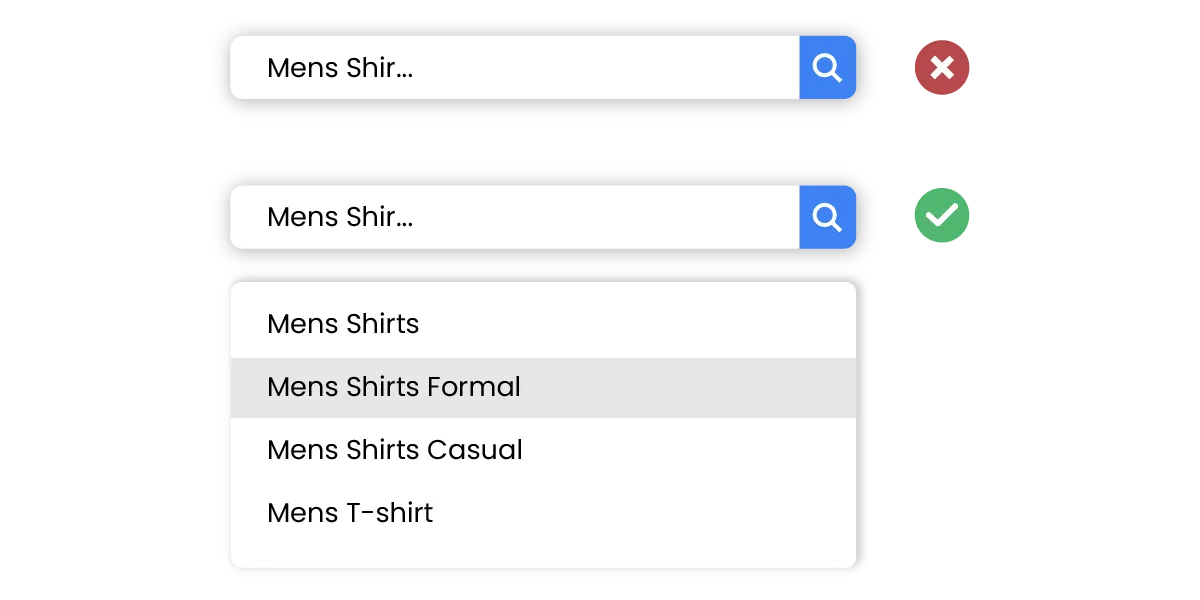 Autosuggestion is a boon, as well as a bane. Work that to your advantage. You can do it by optimizing search results to showcase all the available products on your site.
Autosuggestion is a boon, as well as a bane. Work that to your advantage. You can do it by optimizing search results to showcase all the available products on your site.
Design the interface so that customers can see relevant products when they search using a particular keyword.
22. No Proper Categorization
When designing a website, you want to keep it as simple as possible. And if you’re selling a lot of products, have appropriate categories for them. Don’t confuse customers by throwing up a zillion product categories for a simple search. The best bet would be to group products by the utility.
For instance, categorize apparel under western and ethnic first. Then add tags, like shirts, dresses, kurtas, and saris.
Your intention of categorization should be to provide the fastest access to required apparel by the user. You may have seen it on world-class ecommerce sites like Amazon, Target, etc.
 It is significantly better than grouping them under categories depending on, material and print patterns.
It is significantly better than grouping them under categories depending on, material and print patterns.
Effective categorization saves them time and improves user experience.
23. Inadequate Website Traffic
Driving traffic to your website should be an integral part of your marketing plan. The more traffic your website has, the more chances you will have to sell products.
Make use of media – traditional and online – to talk about your business. Generate great content to offer customers who visit the site.
 The idea is to make sure your website gets many clicks, but all those clicks don’t convert into sales. So, work towards diverting quality traffic.
The idea is to make sure your website gets many clicks, but all those clicks don’t convert into sales. So, work towards diverting quality traffic.
People who identify your brand are most likely to make a purchase – to improve business. The key is not just to focus on traffic numbers. You also need to make sure the conversion rates are high.
24. Poor Website Navigation
With the number of products to sell, navigation is a problem eCommerce websites have to deal with. Keep your site interface simple and easy to navigate through.
Avoid clutter, keep the sides (of the site) free, and easily identifiable call-for-action buttons.
This website posted here has so many products categorized into many. But the owner has made it tough to access, making the navigation experience worse. So, build Your website so that a first-time user should be able to find his way around.
 Build Your website so that a first-time user should be able to find his way around. Because a complicated buying process never really impressed anyone. And it is too difficult. They might just click away to another website.
Build Your website so that a first-time user should be able to find his way around. Because a complicated buying process never really impressed anyone. And it is too difficult. They might just click away to another website.
25. No Unique Selling Point
If you want to stand apart from the crowd, every business needs a unique selling point. Amazon has one-day delivery in several areas. It was unique for several years until others caught on.
Why should a person choose your site over several others selling the same products? And probably at a lesser price, too?
To draw them to you, you need a unique selling point.
For example, a US coffee brand, Deathwishcoffee claims that it is the world’s strongest coffee and offers to refund 100% if the customers aren’t satisfied.
 The USPs can be like offering tailor-made services or excellent chat support. Things like good discounts and great content could be some of them. Identify your target audience and model your site accordingly.
The USPs can be like offering tailor-made services or excellent chat support. Things like good discounts and great content could be some of them. Identify your target audience and model your site accordingly.
26. Irritating Popups Causing Bad Browsing Experience
Popups are great marketing tools, but not always. Popups that don’t close on a single click or the ones that hide your cart or other important CTA buttons annoy users. Also, Popups that automatically redirect you to another site are business killers.
 Design your website in such a way that popups appear only when a customer is nearing checkout so that it doesn’t interrupt a sale.
Design your website in such a way that popups appear only when a customer is nearing checkout so that it doesn’t interrupt a sale.
All this is reason enough why you should use popups carefully. They can work incredibly well for your business. But on the flip side, they can fail just as badly.
27. Pricing Way-below or Higher Than Market Pricing
How you price a product speaks volumes about your site. It also factors in on the kind of audience you are trying to reach. Decide on the cost after taking into account the warehouse and shipping charges, market value, and competition.
Pricing a product too high or too low will impact your credibility. You always need to keep an eye on market prices.
When it comes to pricing strategy, the idea is to keep it just below the lowest price. And, of course, it should be a viable price for your strategy. Lowering it below your margins is just not sustainable over a while.
28. Increased Shipping Cost
No one will buy from you if your shipping cost is three-fourths of the product price. Decide the shipping charges based on the items and distance it needs to cover. You can also offer free shipping if the cart value is more than a certain amount.
For instance, here, we have added two items in the cart in which there is free shipping for one time and a charge for the other.
 To avoid cart abandonment, indicate all your charges on the product page. Also, include the cost of delivering the item to the customer.
To avoid cart abandonment, indicate all your charges on the product page. Also, include the cost of delivering the item to the customer.
A strategy that has worked well for eCommerce brands is to include shipping costs within the product price. Levying extra in the name of shipping has a detrimental effect on buying decisions.
29. Lack Of Trust/Website Credibility
Make your website’s payment page safe by using a secure socket layer. It will encrypt the information.
Wonder why you need a Secure Socket Layer? You can read this post to know the importance of SSL/HTTPS for an Ecommerce Website & Its effects on SEO.
You can use online SSL checker tools to check the SSL installation.
 A customer may think twice about using cards to make the payment. The reason is they may worry about their sensitive payment details.
A customer may think twice about using cards to make the payment. The reason is they may worry about their sensitive payment details.
The site must function without any flaws or coding errors. It will reduce the security concerns of a customer.
Testimonials, reviews, and star ratings by verified customers are Vital. It will add credibility to the site. Again, this also plays into the social proof mechanic who can improve trust.
30. Miserable Website Content
Poor quality content and abysmal photos can ruin your Commerce site.
An ecommerce store should give equal importance to showcase all products beautifully. The left product is attractive in the image below, while the other is barely visible. It creates a negative impression, thereby hampering the brand value.
 It will damage your site, even if you have amazing products to sell. So ensure product descriptions, care instructions, and other related details are well worded.
It will damage your site, even if you have amazing products to sell. So ensure product descriptions, care instructions, and other related details are well worded.
Invest your time and money to take care of these things. You can add value by publishing features related to the available products.
Most eCommerce brands don’t have long-form content on their page. But you could test your audience with a few blog posts.
31. Not Optimizing Social Media Content
Today, you can find a chunk of traffic from social media sources. But this doesn’t come easy. You need to make sure to work on your social media profile and optimize it.
The problem here is that very few brands work on their social media. And this is a major cause of concern for eCommerce websites.
Because the Social Media sprout shows how much you’re missing if you are not targeting your audience on social media.
 It leaves the option of taking leads and prospects from competitors.
It leaves the option of taking leads and prospects from competitors.
Several smaller companies have been able to leverage this aspect. They have a better social media process to beat bigger brands. It is also known as social media marketing or SMM.
The purpose of this pipeline is to generate more leads and visibility for your brand. SMO can be your guide when you want to get the most out of your social media platforms. It has guidelines on everything from research to execution.
32. Having Premature Scaling Issues
It is common among several new eCommerce brands. The expansion comes very quickly in this niche if everything goes right. The problem is when companies do not know how to handle this.
Most likely, the situation is something that they might not have prepared for.
The world’s richest man, Jeff Bezos, also faced similar issues back in the time. Businesses should be quick to fix when they witness it. The premature scaling is a boon and bane as your brand name is at stake.
 It can lead to several problems in different areas. Like with inventory, logistics, and pricing, just to mention a few.
It can lead to several problems in different areas. Like with inventory, logistics, and pricing, just to mention a few.
The solution would be to make sure that expansion always takes place in a phased manner. The eCommerce brand should never lose control of the growth rate. In many cases, scaling up procurement is preferred to satisfying immediate demand.
Always make sure to lay the groundwork for keeping in mind future requirements. Anticipation is key when planning for expansion.
Make sure you have a proper SEO foundation laid down for your products. Because SEO is easily scalable, you don’t have to worry too much. The rest of the eCommerce areas like a stocking, logistics, and sales will be a problem.
33. Lack of Proper Product Descriptions
Customers have a lot of expectations when they are browsing through an eCommerce store. And with a large number of competitors, customers hold the advantage.
One of the things that people look for is proper product descriptions. And this is where a lot of eCommerce websites sometimes mess up.
They might not have enough detailed information about a specific product.
For example, a pair of wireless headphones might not have battery life.
In the image below, the description doesn’t contain vital details like battery life, technical interface, range of connectivity, etc. (IN the next line present in the content, replace “it is a” with “These are”)
 It is an important aspect of the product, and it affects their purchase decision.
It is an important aspect of the product, and it affects their purchase decision.
People will simply click away from the website in search of a better experience. It is probably one of the main reasons for cart abandonment issues.
The solution to this would be to have all important data included right on the product page. It can prevent confusion and make purchase decisions easier.
34. Keeping Unrealistic Business Goals
While it is good to be inspired by the business’s giants, you need to be realistic about your goals. You should understand that they are at the pinnacle of business after a lot of time and effort. It should act as a guide to tempering expectations for your brand.
The right way to set up goals for your company is to approach them methodically. Make sure that your goals are specific, meaning it needs to be understood easily. Make sure it is measurable and quantifiable. Also, you need to check if they are realistic.
Before zeroing on business, you should analyze if what you're expecting is realistic or not. To put it simply, here’s an example of a company that has sold shares at an unrealistic IPO price and experienced a 40% drop in just three days.
 That is where you should look for examples from your competitors. It can give you a much better idea of what you should aim for.
That is where you should look for examples from your competitors. It can give you a much better idea of what you should aim for.
Another point to note is the timeline. You need to make sure that you have strict timelines in place. Otherwise, you’ll end up wasting effort.
35. Poor Product Maintenance
Every eCommerce brand needs to store their goods to maximize profit.
For smaller brands, this is where a lot of money is gained or wasted. It means you need to have a space protected from the elements. It should be secure as well. And storing is just one part of the problem. Another concern is the retrieval of the product.
You need efficient databases and storage methods to maximize efficiency. Amazon uses robots as part of their workforce. It makes them super-efficient and easy to scale.
That is where smaller brands need to learn. But you cannot emulate this easily. It needs significant resources and manpower to make it work.
The average size of an Amazon fulfillment center is 800,000 sq. ft. As you can see, these are huge numbers. And cannot be managed easily. That is why brands need to be careful with how their product is stored and maintained.
36. Lack Of Product Segmentation
An important reason for lack of performance that you might have overlooked is segmentation. It is dividing your customers into curated groups. Each group may have shared characteristics among them.
As an eCommerce business, it helps you deliver what they exactly want. Let’s take the example of wireless headphones here. The two most performant brands in the niche are Sony and Bose.
Users are strongly divided among this. Therefore, pushing a Bose user to Sony or vice versa just won’t work. Here you need to tailor different marketing funnels keeping in mind the needs of the two. A one size fits all approach won’t work in this case.
There are several strategies that ecommerce businesses can include in their customers. If you want to showcase products on their browsing history, you can be segmented as below to personalize your approach.
 Segmentation can offer your eCommerce business better conversion and retention. It can also lower marketing costs and push revenue at the same time.
Segmentation can offer your eCommerce business better conversion and retention. It can also lower marketing costs and push revenue at the same time.
37. Bad Money Management
Any business needs to focus on money management or cash flow. It will keep the business going. It enables the proper stocking of goods and logistics. And not everything can run on credit – liquidity is an important factor.
So, tracking customers over a period shows how many are paying, how many are returning, how much it costs for shipping, and other factors shown below.
 And as eCommerce is volatile, the needs for proper cash flow are even greater. And it is also a reason why a lot of businesses fail. There are a lot of reasons why this happens.
And as eCommerce is volatile, the needs for proper cash flow are even greater. And it is also a reason why a lot of businesses fail. There are a lot of reasons why this happens.
Backing a bad product is an important reason. It could also be because of logistics bottlenecking. Also, ordering in anticipation of demand which never comes. And most times, this happens when you speculate too much.
The key is to stick to being careful. Especially true when you’re just starting or dealing with a new product. When it comes to cash flow, you are on the side of caution unless you’re Amazon or Walmart. Don’t take too much of a risk here.
38. Underestimating The Time
When it comes to eCommerce SEO, a lot of brands tend to underestimate the time. Even today, people think SEO works like magic. But in reality, there is just so much competition that it is difficult for even established companies.
For example, out of thousands of e-stores that sell “running shoes,” only a few get to attract many audiences by ranking on top. All SEOs work hard to secure a spot here.
 Any professional SEO agency will give you the right timeline. But the problem is with the mindset of the eCommerce owners. They push for quicker results. It leads them to buy into getting rankings quickly schemes that will not deliver lasting results.
Any professional SEO agency will give you the right timeline. But the problem is with the mindset of the eCommerce owners. They push for quicker results. It leads them to buy into getting rankings quickly schemes that will not deliver lasting results.
The key here is to be realistic about your time when it comes to eCommerce SEO. Depending on the brand and niche, it can take months or sometimes years to see results.
The reason is that your competitors are not sitting idle. They are working on their SEO as well. It makes it tough for you to catch up and pass them. Talk to as many SEO agencies as you can. An average of their quoted time will give you a good estimate.
39. Selling Untested Or Unproven Products
With the speed of today’s competition, brands are trying to stock on new products as soon as possible. It can sometimes backfire on them.
The products would not have been market-tested. If the product is found to be unsatisfactory, it can lead to bad reviews about it.
In fact, 94% of the people have avoided purchasing the product after reading the reviews. As a customer, would you still buy the product after reading the reviews below?
 Sometimes, eCommerce brands can also get caught in the crossfire. It is not completely the eCommerce brand’s fault. But you should take precautions against many such incidents in a short period. Having this occur repeatedly means that the audience will begin to lose trust in the platform.
Sometimes, eCommerce brands can also get caught in the crossfire. It is not completely the eCommerce brand’s fault. But you should take precautions against many such incidents in a short period. Having this occur repeatedly means that the audience will begin to lose trust in the platform.
The key here is to make sure that newer or unproven products are smaller than the total number. It means less of a hit taken when the products are found to be bad.
40. Working on a Saturated Market
An aspect that is undeniably true today is the level of competition in the market. The market is full of brands and products. It can make progress difficult when it comes to eCommerce specifically.
Even though customer numbers are growing, brands are finding it much harder to sell. It is because brands are finding it hard to innovate quickly enough to make an impact. It can also happen because some niches are more competitive than others.
Niches like “online apparel” can be difficult to penetrate. Another concern is that the giant in the niche is buying up competitors in the industry.
An Indian eCommerce brand Flipkart was bought by Walmart. It was surprising because Flipkart was doing well on its own. But Walmart is a much bigger company, and it found value through acquisition. It’s just one example of how bigger entities buy out smaller companies to reduce competition.
41. Quitting Too Early
As we mentioned a bit before, results when it comes to competitive niches take time. And eCommerce is perhaps one of the most competitive niches out there.
Ecommerce SEO takes time, and a lot of people are not aware of this. They are ready to give up, having spent time building a foundation. It is the wrong way to go about it.
For example, AWOK, a UAE-based ecommerce business, shut it although the ventures were ready to fund to make it successful.
 Once you decide on a path to SEO, you should stick to it for a while. It gives you a better chance at results. It also gives you the space to make corrections to your process.
Once you decide on a path to SEO, you should stick to it for a while. It gives you a better chance at results. It also gives you the space to make corrections to your process.
What you need to do here is to keep working on your SEO till you get results. That is what all big brands do – they wait it out until they can draw outcomes.
42. Not Having A Robust Backend
Looks and design do matter in the eCommerce niche. But what is more important is that it works well. That is where expert web developers are required. They can ensure a website works well as it looks.
After all, if a website just looks good, it’s only half the purpose served. You will lose clients with technical errors on your website. If there are critical issues with your website components like payment, you will be liable for damages.
So, it’s cardinal to keep a check on user behavior after adding items to know if there are technical issues or user issues (as a few cases shown below) during transactions to fix them.
 If you want to avoid these kinds of scenarios, bulletproof website code is the best option. Test and retest your code under various circumstances. Make sure your app is as bug-free as possible. And once you have a stable website, then expand it.
If you want to avoid these kinds of scenarios, bulletproof website code is the best option. Test and retest your code under various circumstances. Make sure your app is as bug-free as possible. And once you have a stable website, then expand it.
Add more functionalities and make it more efficient. Again, while the design is important, without functionality, you will not have customers.
Relevant : Your Pocket Manual To The Must-haves in Ecommerce Websites
43. Having An Intrusive Registration Process
Registration Process is a critical aspect of eCommerce website design to make buying as painless as possible. It includes handling the registration process correctly.
If you force people to register to buy a product, most of them will not do so. You need to have an option for users to buy things as a guest.
Customers want to keep their information private due to increased data exploitation. The ecommerce businesses that provide the best experience by allowing the “purchase as guest” option are likely to attract more customers.
 This single step can make retargeting them a lot easier.
This single step can make retargeting them a lot easier.
If the purchase process goes well, these guests might be willing to register the next time. Also, make sure that your registration requires only a few necessary details.
Even huge companies like Amazon only require your name and email to start. Or better yet, tie in your registration with another platform.
On several eCommerce websites, you can register with your Google, Facebook, or Apple account. It is even more flexible and something that you should aim for.
44. Lack of Effective Retargeting Strategy
Following up with customers is important in business. For eCommerce, it becomes critical. You might have even seen this in your inbox.
These emails usually go like, “Here’s something you might like!” It is an attempt by the eCommerce vendor to retarget you. And it is beneficial for all types of eCommerce brands.
These are often seen in our inbox after visiting a website or signing up for something.
 With a simple retargeting option, you can increase conversions by up to 128%. You also get ten times the CTR for retargeting ads compared to the normal ones.
With a simple retargeting option, you can increase conversions by up to 128%. You also get ten times the CTR for retargeting ads compared to the normal ones.
You can also integrate retargeting with social media platforms. It makes the process of retargeting even more effective. And with the simple use of a retargeting strategy, customers are much more likely to respond.
One of the reasons Walmart is behind Amazon when it comes to revenue is retargeting. They just don’t have a strong retargeting strategy. At the same time, Amazon’s retargeting has enabled them to triple conversions in some cases.
45. Lack of Upselling & Cross-selling
The process of getting customers interested in related products or services is called upselling.
We often see it on Amazon who fascinates customers by listing 100% relevant products.
 And the surprising fact is that not many eCommerce websites do it well enough. It is because there are several things to keep in mind rather than just related products.
And the surprising fact is that not many eCommerce websites do it well enough. It is because there are several things to keep in mind rather than just related products.
Related products are important; 91% of people shop with brands who send relevant offers. But that’s not the only thing.
There is also timing when it comes to upselling. You want to send that upsell offers at the right time. It will require considerable testing. Also, make sure that your upselling messages are personalized. If you want them to spend more money, they will expect this.
Finally, keep in mind that your upselling rates do not cross 50% of the total price. Someone looking for $100 running shoes are not going to buy a $2k special edition sneaker. Study your audience trends and craft your upsell strategy accordingly.
46. Not Opting For Product Specific Strategies
One of the mistakes inexperienced eCommerce brands commit is lack of product strategies. It is the difference between having products that sell out and having excess stock. And this is even more relevant today because of the competition.
Popular eCommerce websites have impressive product strategies, from banners on their homepage to exclusive landing pages. It is this kind of effort that is required to push products off the shelves. Product-specific marketing makes the process of buying the product more appealing to the customer.
An example of this is any new iPhone sold on eCommerce websites.
Apart from the product itself, it’s their marketing strategy that pulls more traction to them.
 They will have a huge splash ad on the homepage. It will take you to a landing page, which is rich and dynamic. The whole point of this is to offer an experience that increases buyer intent. And it helps when it comes to premium products.
They will have a huge splash ad on the homepage. It will take you to a landing page, which is rich and dynamic. The whole point of this is to offer an experience that increases buyer intent. And it helps when it comes to premium products.
47. Ranking Poorly On Search Engines
SERP rankings are super important for an eCommerce website. 87% of all consumers search for products on searches. And once they find it, they are 66% more likely to click one of the first three links. It makes it imperative to rank well to improve your CTR.
There are several factors why your website might be ranking low on searches. Content duplication is one area that is common with eCommerce.
Improper schema markup can also hamper results. Not having enough information on product pages means a drop in traffic.
With this, search engines will have deeper knowledge about the product, and it may also rank your products in rich snippets.
Look at the websites ranking higher for the keyword “Apple iPhone” using rich snippets.
 Web design is also important here. If a page has a bad design or navigation, people will not visit that anymore.
Web design is also important here. If a page has a bad design or navigation, people will not visit that anymore.
The only remedy for this problem is high-quality SEO. It can help sort out all problems on your website. Your rankings will increase with powerful SEO techniques.
48. Poor Website Security
It is perhaps non-negotiable for an eCommerce website. There are going to be hundreds of thousands of people buying a lot of products on your website. It means there is going to be a lot of sensitive data exchanged. And if you don’t have your website security sorted out, people are going to leave.
There are a lot of instances of online frauds and data leaks today. So if a customer is going to trust you, you need the latest in security. The first step towards this is getting an HTTPS standard for your website if you haven’t already.
If your website is going to show up like this, who will trust or buy a product from you?
 Also, make sure that payment gateways on your website conform to the highest standards. It is normally the PCI DSS (Payment Card Industry Data Security Standard). When it comes to payment gateways, it’s good to have all the popular ones. It can offer your customers flexibility when it comes to checking out.
Also, make sure that payment gateways on your website conform to the highest standards. It is normally the PCI DSS (Payment Card Industry Data Security Standard). When it comes to payment gateways, it’s good to have all the popular ones. It can offer your customers flexibility when it comes to checking out.
49. Levying Hidden Charges and Low Transparency
As an eCommerce brand, it is in your interest to keep the payment as transparent as possible. Today’s customer is a smart and empowered individual. They have a lot of choices when it comes to purchasing online.
Ecommerce agencies need to take this into account when deciding on the payment structure. Let’s take this scenario - your product page does not include tax when displaying the price. It is only calculated in the cart just before checking out.
For a customer, this is an underhanded way to gain their trust. The better way would be to display the all-inclusive price right on the product page.
The customers look for products within their budget and add them to the cart. The customers are more likely to cancel the transaction if the final cost increases after adding tax and delivery charges during the checkout.
 As an added advantage, I also try to include delivery charges as well. And there shouldn’t be any other charges added to the total just before checking out. Keeping things transparent as possible can go a long way to gain a steady list of clients.
As an added advantage, I also try to include delivery charges as well. And there shouldn’t be any other charges added to the total just before checking out. Keeping things transparent as possible can go a long way to gain a steady list of clients.
50. Not Using Promotions Or Discounts
Everybody loves offers and discounts. That is why some major players always have some promotion on their page all through the year. And don’t just offer discounts - make sure you advertise this strongly on all your platforms. It can get you maximum engagement on your eCommerce website.
The offers should excite the users to purchase them.
 Something that you shouldn’t be doing is using intrusive popups to push your promotions.
Something that you shouldn’t be doing is using intrusive popups to push your promotions.
About 80% of people usually close popups even before they read the content. It makes it an unreliable delivery system for promotions.
Another point to remember is not to discount too deeply. It is enough to undercut the minimum market price by a small percent. Overdoing discounts can result in losses. It can be hard to recoup because of sensitive pricing.
Keep track of local festivals and holidays. People tend to buy more during these times. And lastly, you should never over-promise and under-deliver when it comes to discounts.
Want to get Quality Organic SEO Traffic to Your eCommerce website? Get a FREE Consultation with our eCommerce SEO experts now!
ABOUT THE AUTHOR:
Naomi Wilson

Naomi Wilson has been in the digital marketing industry for more than seven years. She has helped companies such as Kellogg, Best buy, Honeywell to improve their online presence. She is an expert in writing high-converting content, especially for ecommerce sites.
Related Post
50 Reasons for the failure of an Ecommerce website
Your Pocket Manual To The Must-haves in Ecommerce Websites
Artificial Intelligence on Ecommerce
How to Migrate an Ecommerce Website Without Affecting SEO Rankings?
Importance of UX for an eCommerce site & How it Impacts your SEO?
Importance of E-A-T for your eCommerce Site & How it Influences your SEO?
A Complete Guide to Technical SEO for eCommerce Websites
Important eCommerce Metrics You Should Track to Ensure Success
Important of User-Generated Content on eCommerce
On-page SEO Mistakes to Avoid On Ecommerce
Complete Guide to Dominate Your Ecommerce Keyword Research
Ecommerce SEO Checklist: Keyword Research
Why Choose Haitna as Your eCommerce SEO Agency?
Importance of SSL/HTTPS for an Ecommerce Website & Its effects on SEO
List of eCommerce SEO Trends to Look out for in 2021
Importance of Blogging for an eCommerce Site
Ecommerce Landing Page Optimization Tips to Increase Sales
ABOUT THE AUTHOR:
Joseph Schneider

He has spent more than 12 Years in strategising and executing SEO campaigns. He is interested to writing Digital-marketing, PPC and Social Media Marketing related topics.
Recent Post
30 Reasons for the failure of an eCommerce website
